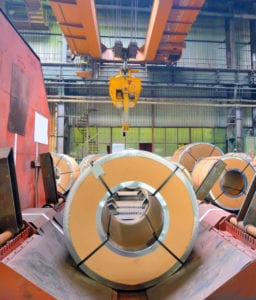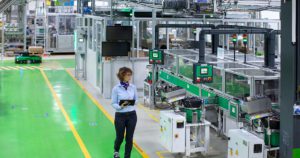A French industrial newspaper (“Process Alimentaire” of September 2012), published an analysis of the 5 year trend for the European dry milk industry. The report shows a potential for 20 major greenfield projects resulting in approximately 2 B€ CAPEX. Based on additional information, we could also see further projects added in the Netherlands and France at a minimum.
Interesting enough, most of the significant projects are due by the end of 2014 which aligns with the end of the milk production quotas from the European Union which have been in place since 1984.
However, the European dairy consummation trend is quite stable already, so where is all this new milk production going?
Most of the powdered milk will be imported toChina and addresses the change in food habit of the 350M middle class growing population. This is similar to the entire population of the USA.
Can we conclude that milk could be a potential new European “white gold”?
Key concerns for these projects are food safety, energy efficiency, carbon footprint and naturally… time to market. The first and most profitable greenfield project could control the market, with the other projects facing the risk of being dropped or even forced to close down quickly?
These large investments are quite interesting but raise some global questions:
– How can such investments be, at least, “carbon neutral” due to the transport from Europe toAsia?
– How can we secure these factories profitability on the long run knowing the cost of energy perspectives?
I’m very interested in your vision on this global subject and I welcome your feedback.




Conversation
One can argue that these investments are eyeing growth markets in Asia and South America. As in other businesses, Chinese companies are a growing threat. Yili and Mengniu are moving up in the chain and likely will try to export to growth markets. Will we see a dairy glut?
Hard to see how we could make transport of dairy carbon neutral when the export is focused on far reaching markets. The plants should be designed from the outset to minimize carbon footprint. It is possible that exporters will start leveraging Arctic northern route to ship cargo more efficiently from Europe to Asia.
Thanks for reading Hany,
What about sailing cargo ships across the arctic route? That will be an interesting experience?
More seriously, we see by this example the complex trade off that has to be looked at between the immediate safety of our children and the carbon footprint for our grand children … no easy answer!
A large percentage of New Zealand’s dry milk production has been going to China for years. As the middle class grows in China, they will look for additional sources. This is good business for European suppliers.
Thanks for your comment Tom,
This trend is also impacting the west coast of the USA … be prepared to see some CAPEX in California as well. Based on our recent experiences, I am prepared and happy to support you guys as well 🙂
Hi Eric,
The subject of your presentation is surprising and very interesting.
Sure that in France we don’t have petrol, but we have milk and golden ideas.
Patrick
Thanks for feedback Patrick,
do we have any other specific foods & beverages in Europe that can help Chinese babies to grow safe and well?
Hi Eric,
This is interesting news, thanks for sharing.
I am not a European powder milk expert, but raising (and feeding) two young kids in China helped me to think about the topic 🙂
1/ Powdered milk weight is only a fraction of the weight of the equivalent liquid milk, and it does not require as complex refrigeration process as liquid milk does during transportation and storage. So it is rather an energy-friendly product, on the logistic side.
2/ My understanding is that when middle-class Chinese consumers buy imported powdered milk, they buy it first for quality and safety reasons, because of higher trust in foreign standards and traceability, and they are willing to pay a high price for that, notably when it is to feed their Children. So it is more than a commodity product, which does not directly compete with the very inexpensive locally produced milk, and foreign origin is a “feature” that consumer are willing to pay a premium for. Following the 2008 melamine scandal, government has been shutting down many suspicious dairy product companies. It was 5 years ago, yet the trauma from this tragedy persists and it is likely Chinese (growing) middle class will continue to buy imported product for some time.
3/ To compensate for the downstream logistic cost, shouldn’t European dairy producers (and we!) focus on way to improve the upstream part of process (e.g. ensuring the farms that are supplying the milk have implemented the best sustainability and efficiency practices by providing data tracking tool, implementing best-in-class EE and sustainability practices in the plant), to a level still difficult to replicate locally today in China? When time comes, the model can then be replicated locally…
Thanks for great comments Sylvain, I totaly agree.
How prepared is China in your experience to breed cows and start to produce high quality local milk?
Take care of your 2 children!
If it is not already the case, I am sure China is able to produce large volume of high quality milk very quickly. In addition the government listed in their latest 5-year guideline (formerly called plan) attracting foreign investment in modern agriculture as one of their priorities. There is nothing those days that can’t be produced in China – except maybe a good Camembert.
The problem is trust. Via social media such as Weibo, population is increasingly aware of all kind of scandals linked to greed and corruption and affecting the population, and confidence level has decreased even more due to poor management of crisis. Government is aware of that and is taking steps in the right direction, but it will take time to regain trust. So even if you can produce high-quality milk in China, it will be difficult to prove it to the population, and sell it at the right price.
This give a good window of opportunity for foreign milk producers, and I think the winner will not necessarily the first to enter the market, but rather the opinion leader in term of quality and food safety.
Become the Volvo of milk in China and your powdered milk will turn into a juicy business!
Great Comment Sylvain !
Social media may speed up the move to good / safe food… Even Camembert (?)
I like very much your last sentence … May I change the brand to Porsche to change it to a fast growing business ?
Eric
Eric,
good news then for APC and Energy saving: the business case of dry milk is having link to energy efficiency… (and the cream makes the bottom line)
New Zeleand is of course a front runner in this technology but as usual, german supply the hardware…
Thanks for your feedback Gilbert,
indeed, New Zealand is one of the most famous dry milk producing countries, but they can’t expand the size of their wonderful island too much. So Europe at first, then, South America and North America are now involved.
The hardware, such as dryers, actually do not come so much from Germany but more from Denmark & Netherlands. There as well, the situation is fast evolving due to the attractiveness of the market. Do you have any examples in mind ?
6 or 7 years ago nobody thought that the powder of European milk could be competitive. But in NZ for example the cost of production increase (price of the hectare of meadow, washing of grounds with nitrates) On the other hand today the local Chinese sector produces a milk at an upper price in particular because of the import of corns, cakes of soya). We can thus think that the model of export of powder from Europe is long-lasting for several years.
Thanks for your comment Frederic,
Let’s hope the European export business model will last for 20 / 30 years !
Do you have any experiences or ideas on how to get that business sustainable and green with a potential continuous improvement capability ?
As you know, electricity and transport costs are rising and milk powder is a low margin business …